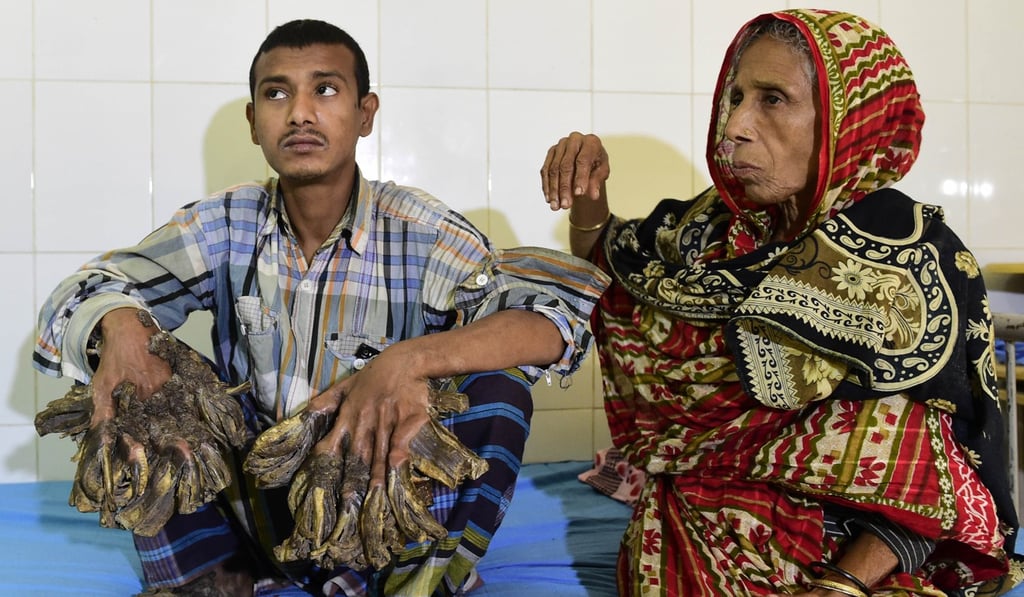Bangladesh’s ‘Tree Man’ returns to hospital as condition worsens
- Abul Bajandar has had 25 surgeries since 2016 to remove growths from his hands and feet but fled hospital in May 2018 to seek alternative treatment

A Bangladeshi father dubbed “Tree Man” for the bark-like growths on his body returned to hospital on Sunday after his condition worsened, he said.
Abul Bajandar has had 25 surgeries since 2016 to remove the growths from his hands and feet at Dhaka Medical College Hospital.

Doctors were on the verge of declaring their treatment a success before a sudden relapse prompted Bajandar to flee the clinic in May without telling staff.
But on Sunday he was readmitted to the hospital after his condition deteriorated, with the growths now covering almost the whole of his hands and feet, the 28-year-old said.
“I made a mistake by leaving the hospital. I sought alternative treatment but could not find any. I now I understand I should have stayed and continued the treatment here,” Bajandar said.
Samanta Lal Sen, a plastic surgeon at the hospital, said doctors would resume treatment “very soon”, adding the growths had spread to other parts of his body.